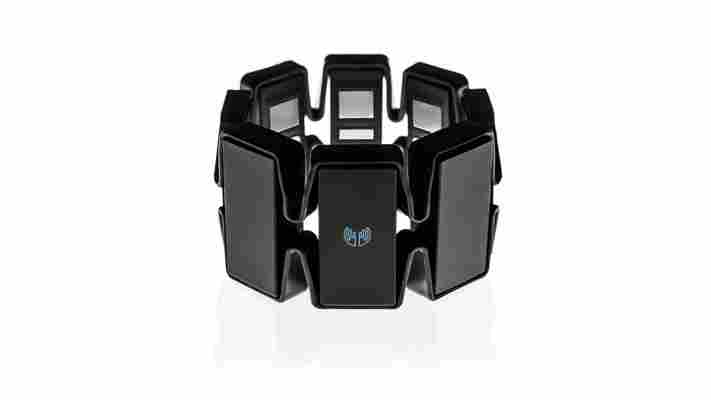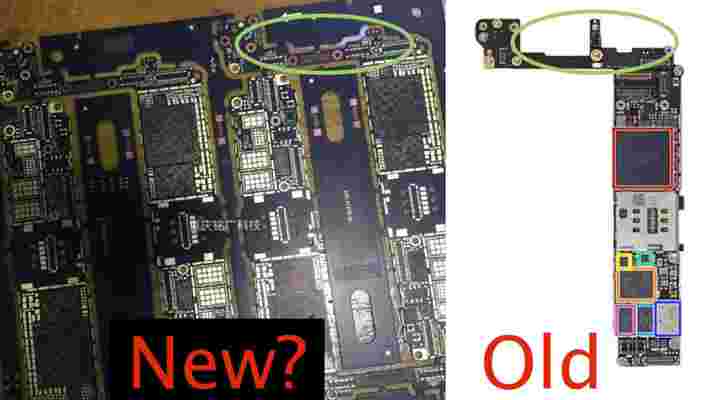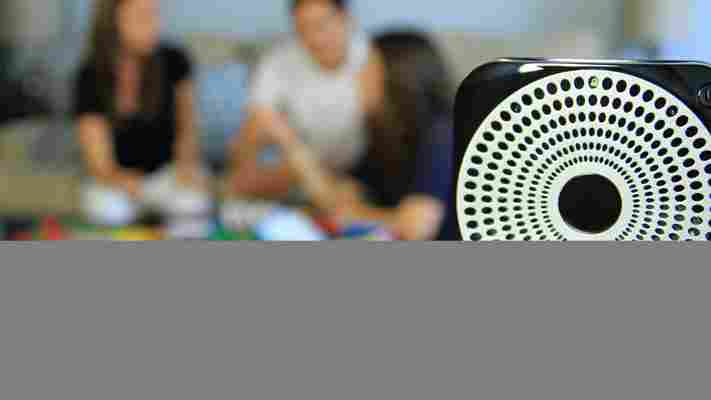Thalmic Labs is one step closer to unleashing its MYO gesture control armband on the world. The company today revealed the final design for the device, which lets you control and interact with technology using only your fingers and hands.

The prior design looked quite bulky, with a solid strap that covered the entire circumference of your arm. In the new version, Thalmic Labs has cut the armband down to “nearly half the thickness” and used a new design that reveals more of your skin. A zigzagging line connects each block in the MYO armband, giving it a futuristic and stylish aesthetic.
The MYO can be worn just below the elbow on either arm, and detects the electrical activity produced by your muscles. It connects to other devices using Bluetooth Low Energy and can be used for a wide range of functions; in a promotional video , the user can seen stopping a track in iTunes by clenching his fist, as well as swiping through webpages by waving his hand up and down.
Thalmic Labs will be hoping that third-party developers embrace the device though – it launched a developer program last July, giving curious minds access to various documentation and APIs related to the hardware. Without widespread software support, it’ll be little more than a trinket on your desk.
The MYO armband is available to pre-order for $149. Thalamic Labs will start shipping developer kit pre-orders next month, before sending out non-developer orders in September. All customers will receive the final hardware though – and the armband will be available for general purchase this fall.
➤ Thalmic Labs | MYO
iPhone 7 Logic Board spy-shot suggests dual cameras are coming
The logic board for the incoming iPhone 7 may have been spotted in spy photos from Apple’s supply chain, and suggests there are some significant design changes in store.

First spotted by TechTastic , the images show a macro form with two logic boards cut from it. The L-shaped board is nothing new, but some of the subtle changes hint that previous rumors are correct.
When compared to the logic board from the iPhone 6S, this model further suggests rumors of a more squat iPhone 7 are accurate. Where the board would settle into the center-top of the iPhone, Apple seems to have eliminated a second screw.
And it also points to a larger camera lens — or perhaps two . On the iPhone 6S, the screw was structural. This time around, it looks like Apple slid the screw down to the main branch — but why would it want more room?
The only logical (pun!) conclusion I come to is that the camera needs extra space, possibly because this board is meant for an iPhone that has two lenses.
Elsewhere, it seems Apple has rejiggered some things, which also lends itself to a smaller footprint for the overall design. Still, we can’t point to the iPhone 7 having any major new features with this image.
But expect upgrades everywhere. If history tells us anything, we’ll see an A10 SoC, and perhaps even revamped NFC, sensors and modem.
The iPhone 7 is expected to launch September 12, and may arrive in-store on September 16 .
Voice-controlled computer Ubi goes on sale for $299 to help make your home smarter
Ubi , a small computer that relies on voice commands for input, has begun shipping. The device completed a successful Kickstarter campaign in 2012 and is now available in the US for $299.

Ubi plugs into a wall outlet, connects to your WiFi and listens for your voice controls. The device can set reminders, play music, send messages and communicate with other Ubi units. You can also use it to control your smart home through integrations with Nest , SmartThings and WeMo .
➤ Ubi
